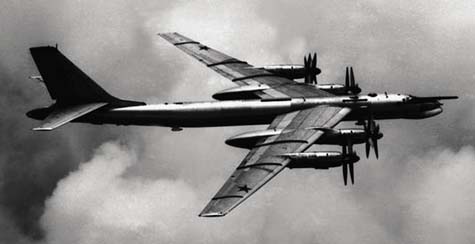 [Image: A Russian TU-95; the TU-95s were originally "designed as bombers but are now frequently used for maritime reconnaissance." They have recently been intercepted in the north Atlantic].
[Image: A Russian TU-95; the TU-95s were originally "designed as bombers but are now frequently used for maritime reconnaissance." They have recently been intercepted in the north Atlantic]. "A burst of war games and military manoeuvres around the world hints at a new strategic landscape," we read.
NATO is training in Sevastopol, for instance, a former Soviet sea port; Japan, Singapore, Australia, and the United States are hosting "war exercises" with India in the Bay of Bengal; China has constructed "an intelligence listening post on the Cocos Islands" in that same Bay of Bengal (a future flash point?), even while helping Pakistan and Bangladesh "build deep-water ports"; and, of course, "Russia and China held their largest ever war games in the Urals last month," during which uniformed men and armed helicopters terrorized fake villages and filled empty architecture with smoke.
Stripped of ornament and devoid of decoration, such training sites are the military's version of a Modernist utopia: eminently functional, purpose-built, a testing ground for new forms of management and planning, they are temporary cities built for and by war – destroyed just as quickly by the forces that assembled them.
Meanwhile, repurposed jets fly above summer coastlines, radioing back and forth with coordinates and suspicious greetings.
No comments:
Post a Comment